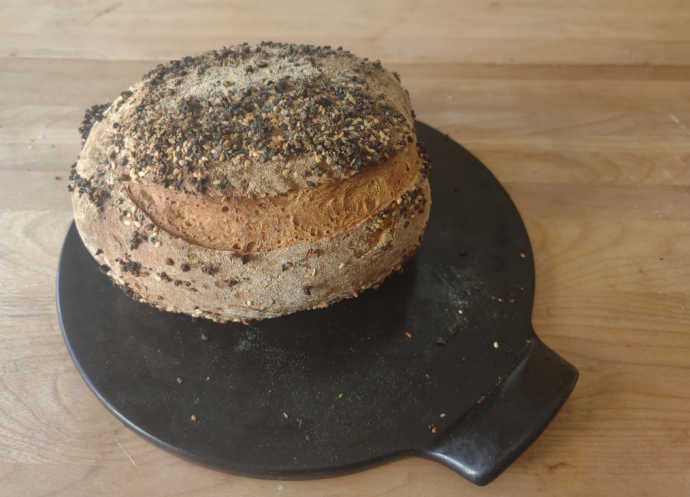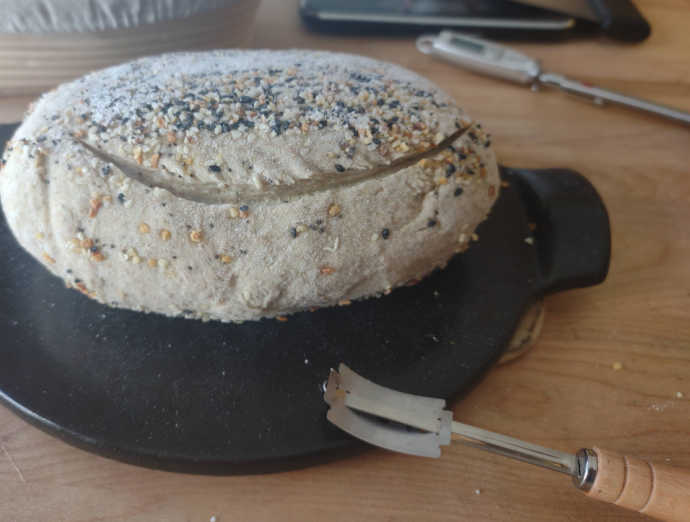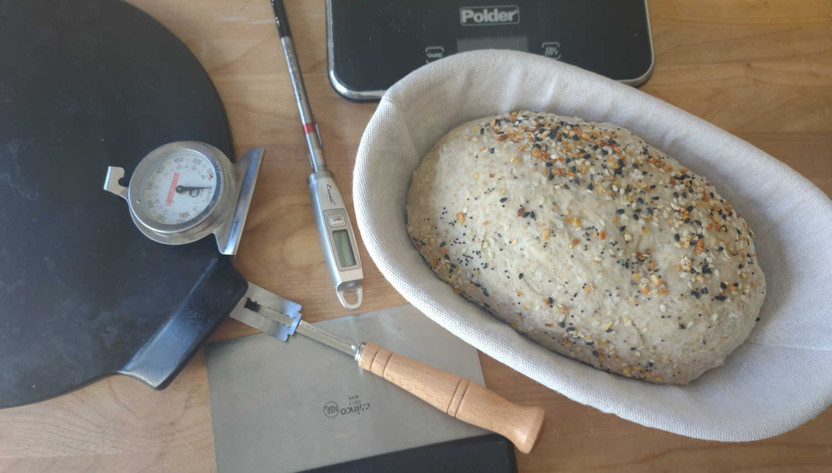6 Essential Tools to Level Up Your Bread Baking
Posted by Amy on May 10th 2023
Our latest blog post was a helpful introduction to bread baking for novices. But if you’ve been baking bread for a while, you may be ready to level up your bread baking game. In this post, we’ll tell you more about which products will give you the most bang for your buck. We’ll cover our favorite bread baking essentials and how they can benefit you in your next bread baking project.
1. Bread Baking Essentials: Kitchen Scale
Depending on who you ask, a cup of flour should weigh 4¼ to 5 ounces. However, depending on how you scoop, that same cup of flour can weigh anywhere from 4 to 7 ounces. This margin of error is too large, especially when baking.
Use a kitchen scale to eliminate this uncertainty. Ingredient quantities are often published in both volume and weight, so you can place a bowl on your scale and scoop flour into it until you reach the correct weight. Because precise ingredient quantities are key to good results in baking, we recommend using a kitchen scale to measure by weight.

A scale will also come in handy when portioning dough. Dough that is divided evenly not only looks better, it bakes more evenly, and the finished product ultimately tastes better.
Our favorite thing about using a kitchen scale is how it cuts down on dishes. Simply measure each ingredient separately in a single bowl on your scale before adding it to your mixing bowl.
Shop for kitchen scales
2. Bread Baking Essentials: Bench Scraper
A bench scraper is ideal for leveling off dry ingredients in a measuring cup, loosening dough from your pastry board, and dividing dough before baking. The handle is easy to grip, and the blunt blade neatly scrapes and slices through dough.
Shop for bench scrapers and other baking tools
3. Bread Baking Essentials: Proofing Basket
Transfer dough to a proofing basket for its final rest before baking. A proofing basket helps dough maintain its shape and build the necessary gases for lift during baking. It also keeps dough from deflating as you transfer it to a bread oven or baking pan.
Also known as a banneton or brotform, a proofing basket is made of rattan, plastic, wood pulp, or wicker. Proofing baskets are sometimes sold with a cotton or linen liner. Dust your proofing basket with flour to keep the dough from sticking and help it release. Proofing baskets made of rattan and wicker cannot be washed, though the liner can be.
Shop for proofing baskets and other bread pans
4. Bread Baking Essentials: Bread Lame
Have you ever looked at a loaf of artisan bread with a gorgeous design carved into the top and wondered how it was created? The baker used a lame.

This tool is handy for a lot more than making your loaf look like it came from a pro. Dough balls, batards, boules, and other shapes can rupture when placed into a hot oven, leaving an unsightly jagged hole in your finished loaf. By scoring the dough with a lame (which is thinner than a knife) you give the air trapped in the dough a place to escape.
You don’t have to be an artist to successfully use a lame. All you need are a few small strategically-placed cuts. The recipe will usually specify which type of cut is recommended.
Shop for bread lames and other baking tools
5. Bread Baking Essentials: Thermometer
We recommend two different thermometers for bread baking: an oven thermometer and a probe thermometer.
Like the name suggests, an oven thermometer takes the temperature of your oven. While every oven comes with its own thermostat, there can still be hot spots or leaks in the door that drop the temperature. Your oven might also just be old and not able to heat up the way it used to. An oven thermometer will help you determine the actual temperature inside your oven. Then, when you’re baking, you can adjust the temperature setting to compensate for any discrepancies..
You may already own a probe thermometer to check the doneness of meat and poultry. Use the same thermometer to check the doneness of your loaf. King Arthur Baking offers some excellent guidelines for bread loaf temperatures. It’s easier and more accurate to insert a thermometer into the center of the loaf rather than to guess based on color. It’s also safer than handling a scalding hot loaf to knock and listen for a hollow sound, as we’ve seen on countless cooking shows.
Also, many bread recipes call for liquids that have been heated and cooled to a set temperature. You’ll find the probe thermometer helpful with this task as well.
Shop for kitchen thermometers
6. Bread Baking Essentials: Baking Stone
Early editions of Mastering the Art of French Cooking, Volume Two, by Julia Child instructed readers to place a pan of cold water on the floor of the oven to create steam, and to bake bread on an asbestos tile. Obviously, this method has since been removed from the book, but instead of an asbestos tile, we’d recommend using a baking stone to achieve similar results.

Preheat a baking stone in your oven to help mimic a professional bakers’ oven. The hot stone will enable your bread to rise up and bake with a crispy crust, far better than a standard metal cookie sheet.
Shop for baking stones
There are dozens of products available to help bake better bread, but these six products are the ones we find to be most helpful and most widely applicable. We hope this post has given you some ideas to improve your bread. We’d love to see the results!
 Free shipping over $49
Free shipping over $49










